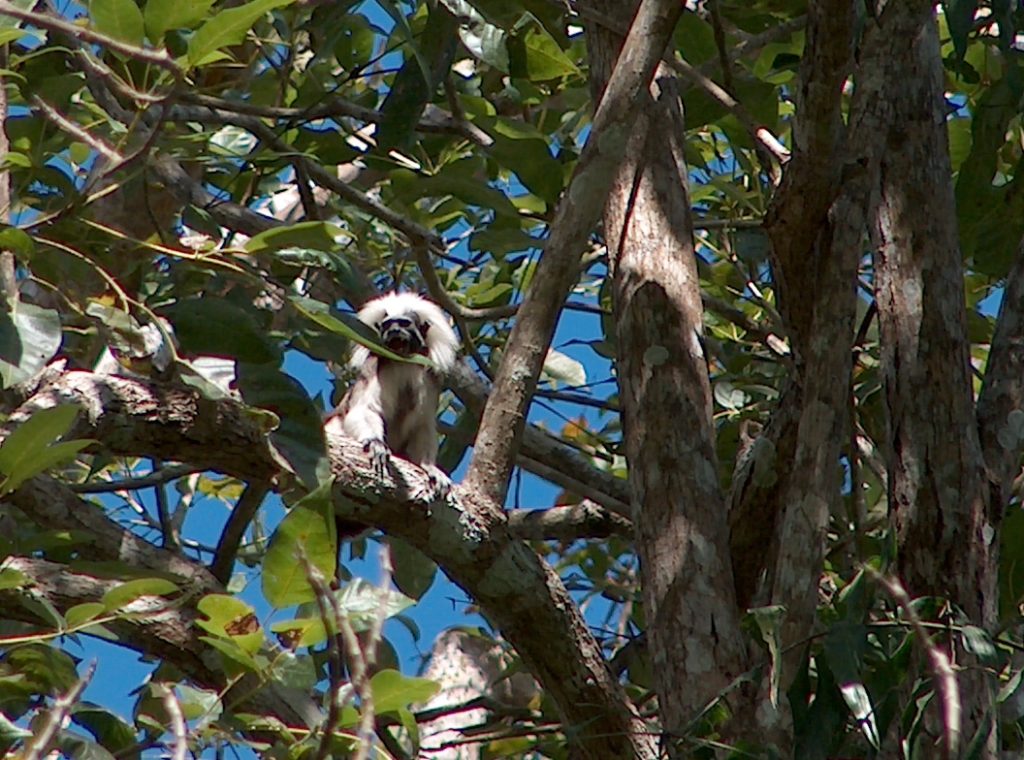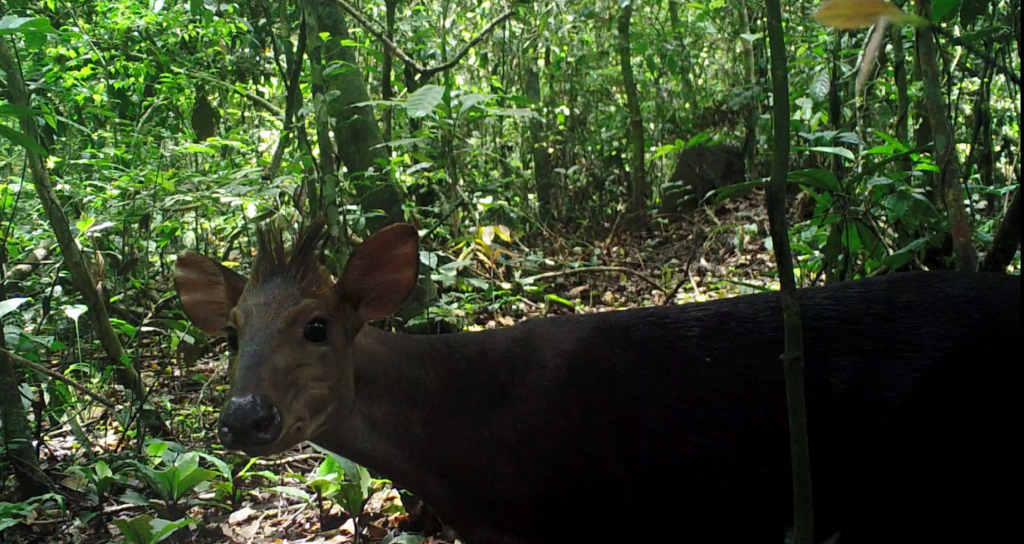Going the Distance to Preserve Biodiversity
Around the world, thoughts are increasingly turning to how we can halt and, perhaps, reverse humanity’s mistreatment of Earth’s environment and ecology. The International Union for Conservation of Nature (IUCN) is the organisation that best understands the scope of the damage already done: of the 138 thousand species the IUCN has assessed, more than 38 thousand species are currently threatened with extinction. However, a further 6,700 are listed as Data Deficient – meaning that we simply don’t know enough about the risks they face. At the University of St Andrews, researchers including Professors Len Thomas, David Borchers and Stephen Buckland in the School of Mathematics and Statistics are helping to change this with Distance, one of the world’s most popular and sophisticated software tools for monitoring biodiversity.

by the IUCN. Photo by Len Thomas.
What is distance sampling? (click to expand)
Led by Professor Stephen Buckland, program Distance gets its name from distance sampling, a widely-used method for estimating the number of animals in a given space. As could be expected from the name, the key to distance sampling is distance – it relies upon the assumption that the probability of a researcher detecting an animal decreases the further they move away from it.
In an area that is to be sampled, lines or points are randomly placed. The line-based technique involves the observer travelling down the line, noting the distances of the animals they observe within a pre-defined distance limit. Based on the number of animals seen, and their distances from the observer, it is possible to estimate how many animals were missed on the survey, and hence how many inhabit the entire area. The point-based technique works in much the same fashion, except that the observer visits a number of points, spending a set period of time at each and measuring distances from the point to each detected animal.

Chimpanzee Foundation.
This technique has also been used with camera traps – cameras automatically triggered by movement. Camera-trap methods are extremely useful for monitoring populations when the animals can be distinguished from one another, such as for snow leopards. However, when individuals all look the same, traditional counting methods fail, because there is no information to allow estimation of population size from the series of images taken at the camera traps. Distance sampling offers a solution by not relying on distinction of the individual, but on distances to detected animals instead, and a distance-sampling approach for such surveys was developed by the Distance team.
Distance is the global industry standard for distance sampling software. As of last year, it has been downloaded over 50,000 times from more than 180 countries. It is widely used by government agencies, international commissions and non-government organisations for wildlife management and conservation. The population estimates enabled by Distance have gone on to inform a range of environmental actions, from improvements to conservation plans to managing the cull or take of harvested populations like many species of tuna.
One of the most profitable areas for tuna fishing is the Eastern Tropical Pacific (ETP), a vast stretch of ocean spanning from Central America to Hawaii, and from California to Peru, covering nearly 200 million hectares. The tuna fishing fleets use a technique called purse seine in which a net encircles the fish before being closed at the bottom, creating a bowl-shaped enclosure. While this method is extremely efficient, it can result in some dolphin mortality because dolphins associate with tuna. As a result, regular surveys are required to assess the risk of fishing methods in the area, without which fishing would have to cease.

Budget cuts have demanded a new solution to the question of how to conduct these surveys, and the Distance team are engaging with multiple international organisations to find one. Dr Cornelia Oedekoven and Professor Buckland are working closely with the Inter-American Tropical Tuna Commission and the Pacific Alliance for Sustainable Tuna to implement a new survey. They coordinated a trial shipboard and aerial drone survey off Mexico in November 2019, and the team’s research on distance sampling is being used to assess the resultant data.
The team has also worked with scientists in Denmark and Norway to design and analyse surveys of a range of Arctic marine mammals, including beluga whales, bowhead whales and polar bears. These surveys allow researchers to assess the impact of ice loss on the Arctic ecosystem – a crucial tool in the ongoing effort to understand the effects of climate change.
Finally, Distance has helped to facilitate a range of studies in wildlife management across the world, as evidenced by the diverse array of studies which cite Buckland, Borchers, Thomas and Oedekoven’s work. These include management of declining populations of Arabian gazelles; managing livestock in the Yaeda Valley in Tanzania; estimating chimpanzee densities in the Ivory Coast; assessing viability of Madagascar lemur populations; and modelling the spatial abundance of fin whales in the Gulf of St Lawrence.
This is just a small selection from a growing list of over 2,000 pieces of published research; a testament to the global significance of Distance. As the functionality of the Distance software increases and its use expands, its role in managing the perilous situation of the planet’s most endangered species will only become more important.